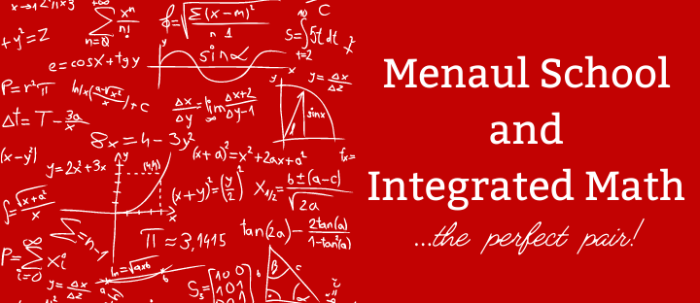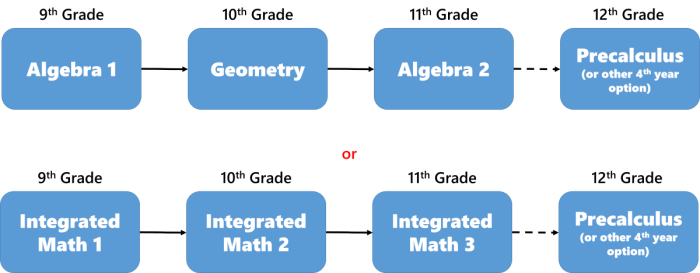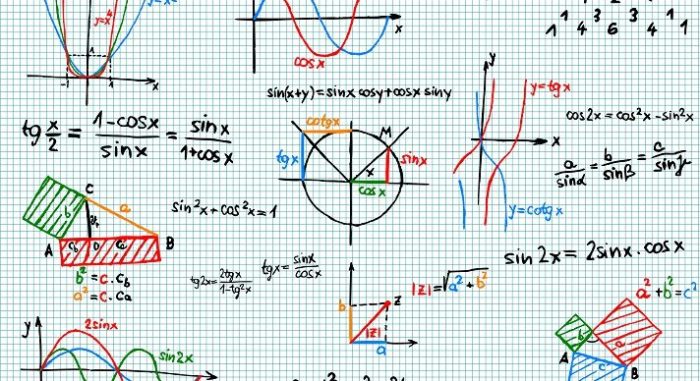Integrated Mathematics 2 Answers PDF is an invaluable resource for students preparing for the Integrated Mathematics 2 exam. This comprehensive guide provides a wealth of practice questions and step-by-step solutions, empowering learners to master key concepts and enhance their problem-solving skills.
Within the pages of this guide, students will find a thorough review of the Integrated Mathematics 2 curriculum, including topics such as algebra, geometry, trigonometry, and calculus. Each chapter is meticulously organized by topic and difficulty level, ensuring a structured and effective learning experience.
Integrated Mathematics 2 Textbook Content

Integrated Mathematics 2 is a comprehensive textbook designed to provide students with a deep understanding of mathematical concepts and skills. It covers a wide range of topics, from algebra and geometry to calculus and statistics, and is organized into chapters and sections that build upon each other logically.
The textbook is written in a clear and concise style, with plenty of examples and exercises to help students learn and practice the material. It also includes a variety of features to help students succeed, such as chapter summaries, review questions, and practice tests.
Key Concepts and Skills
The key concepts and skills covered in Integrated Mathematics 2 include:
- Algebra: solving equations and inequalities, graphing functions, and working with polynomials
- Geometry: properties of triangles, circles, and other geometric shapes, and trigonometry
- Calculus: limits, derivatives, and integrals
li>Statistics: collecting, analyzing, and interpreting data
Approaches and Methodologies
Integrated Mathematics 2 uses a variety of approaches and methodologies to teach mathematics. These include:
- Problem-solving: students are given real-world problems to solve, which helps them to develop their critical thinking and problem-solving skills
- Inquiry-based learning: students are encouraged to ask questions and explore mathematical concepts on their own, which helps them to develop a deeper understanding of the material
- Technology: the textbook includes a variety of online resources, such as videos, simulations, and interactive exercises, which help students to learn and practice the material in a more engaging way
Integrated Mathematics 2 Practice Questions and Solutions
Integrated Mathematics 2 practice questions and solutions are essential resources for students looking to improve their understanding of the subject. These questions cover a wide range of topics, from basic algebra to calculus, and are organized by difficulty level. Each question is accompanied by a step-by-step solution that explains the mathematical concepts and techniques involved.
Algebra
Algebra is the branch of mathematics that deals with the study of symbols and the rules for manipulating them. Algebra is used in many different fields, including science, engineering, and economics.
- Solving equations: Practice questions on solving equations of various types, such as linear equations, quadratic equations, and polynomial equations.
- Simplifying expressions: Practice questions on simplifying algebraic expressions involving polynomials, radicals, and rational expressions.
- Factoring polynomials: Practice questions on factoring polynomials of various degrees, including quadratic polynomials, cubic polynomials, and quartic polynomials.
- Solving inequalities: Practice questions on solving inequalities of various types, such as linear inequalities, quadratic inequalities, and polynomial inequalities.
- Systems of equations: Practice questions on solving systems of equations using various methods, such as substitution, elimination, and matrices.
Calculus
Calculus is the branch of mathematics that deals with the study of change. Calculus is used in many different fields, including physics, engineering, and economics.
- Limits: Practice questions on finding limits of functions using various techniques, such as direct substitution, factoring, and l’Hôpital’s rule.
- Derivatives: Practice questions on finding derivatives of functions using various techniques, such as the power rule, the product rule, and the chain rule.
- Integrals: Practice questions on finding integrals of functions using various techniques, such as the power rule, the substitution rule, and integration by parts.
- Applications of calculus: Practice questions on applying calculus to solve problems in physics, engineering, and economics.
Integrated Mathematics 2 Exam Preparation

To excel in the Integrated Mathematics 2 exam, a well-structured study plan is essential. By identifying key concepts and practicing regularly, students can build confidence and improve their chances of success.
This comprehensive study guide provides a roadmap for effective exam preparation. It covers the core topics, practice questions, and mock exams to help students assess their understanding and identify areas for improvement.
Key Topics and Concepts
The Integrated Mathematics 2 exam encompasses a wide range of topics. A thorough understanding of the following key concepts is crucial for success:
- Algebra: Functions, equations, inequalities, matrices, and vectors
- Calculus: Limits, derivatives, integrals, and applications
- Trigonometry: Unit circle, trigonometric functions, and identities
- Probability and Statistics: Data analysis, probability distributions, and hypothesis testing
- Linear Algebra: Systems of equations, matrices, and determinants
Practice Questions and Mock Exams
Regular practice is vital for exam preparation. Students should engage in solving practice questions and attempting mock exams to:
- Reinforce their understanding of key concepts
- Identify areas where they need additional practice
- Simulate the exam environment and build confidence
- Manage their time effectively
By incorporating practice questions and mock exams into their study routine, students can significantly improve their exam readiness.
Integrated Mathematics 2 Applications in Real-World Situations

Integrated Mathematics 2 is not just a theoretical subject confined to textbooks and classrooms; its principles find practical applications in various fields, including science, engineering, and finance. Understanding these applications not only enhances our appreciation of mathematics but also demonstrates its relevance in solving real-world problems.
In science, mathematical models are used to represent complex systems, such as weather patterns or the behavior of molecules. These models allow scientists to make predictions and test hypotheses, aiding in the advancement of scientific knowledge.
Engineering
In engineering, mathematics is crucial for designing and analyzing structures, machines, and systems. From bridges and skyscrapers to airplanes and spacecraft, mathematical calculations ensure the stability, efficiency, and safety of these constructions.
Finance, Integrated mathematics 2 answers pdf
In finance, mathematical models are used to assess risk, value investments, and make informed decisions. Financial analysts rely on mathematical principles to predict market trends, manage portfolios, and optimize investment strategies.
Importance in Everyday Life
Beyond these specialized fields, mathematics also plays a vital role in our everyday lives. From budgeting and managing expenses to understanding statistics and making informed decisions, mathematical skills are essential for navigating the modern world.
Integrated Mathematics 2 Historical Development: Integrated Mathematics 2 Answers Pdf
Integrated Mathematics 2, as a distinct field of study, has its roots in the early 20th century. However, its origins can be traced back to the ancient Greeks, who made significant contributions to mathematics, including geometry, algebra, and trigonometry.
In the 17th century, René Descartes introduced analytic geometry, which provided a way to represent geometric figures using algebraic equations. This laid the foundation for the development of calculus in the 18th century by Isaac Newton and Gottfried Wilhelm Leibniz.
Key Contributors
Key contributors to the development of Integrated Mathematics 2 include:
- Leonhard Euler (1707-1783): Developed the concept of the function and made significant contributions to calculus, number theory, and other areas of mathematics.
- Carl Friedrich Gauss (1777-1855): Made fundamental contributions to number theory, geometry, and astronomy, and is considered one of the greatest mathematicians of all time.
- Bernhard Riemann (1826-1866): Developed the theory of Riemann surfaces, which has applications in geometry, complex analysis, and number theory.
- Henri Poincaré (1854-1912): Made important contributions to topology, algebraic geometry, and celestial mechanics, and is considered one of the founders of modern mathematics.
- David Hilbert (1862-1943): Developed the axiomatic method in mathematics and made significant contributions to number theory, geometry, and other areas.
Major Milestones
Major milestones in the development of Integrated Mathematics 2 include:
- The development of calculus in the 18th century.
- The introduction of complex numbers in the 19th century.
- The development of abstract algebra and topology in the early 20th century.
- The introduction of computers in the mid-20th century.
- The development of numerical methods and computational mathematics in the late 20th century.
Current Trends and Future Directions
Current trends in Integrated Mathematics 2 research and education include:
- The use of computational methods to solve complex problems.
- The development of new mathematical models for real-world applications.
- The integration of mathematics with other disciplines, such as computer science, biology, and economics.
Future directions in Integrated Mathematics 2 research and education include:
- The development of new mathematical tools for solving problems in science, engineering, and other fields.
- The use of mathematics to address global challenges, such as climate change and sustainability.
- The integration of mathematics with other disciplines to create new interdisciplinary fields.
Integrated Mathematics 2 Resources for Teachers and Students
Integrated Mathematics 2 encompasses a vast array of mathematical concepts, from algebra and trigonometry to calculus and statistics. To support the teaching and learning of this subject, a wide range of resources is available for both teachers and students.
Textbooks
Textbooks provide a comprehensive overview of the subject matter, offering a structured approach to learning Integrated Mathematics 2. They typically include detailed explanations, worked examples, and practice exercises.
- Integrated Mathematics 2by Michael Sullivan and Michael Sullivan III: This textbook covers all the essential topics of Integrated Mathematics 2, with a focus on real-world applications.
- Integrated Mathematics 2by Larson and Boswell: This textbook is known for its clear and concise explanations, along with a wealth of practice problems.
- Integrated Mathematics 2by Demana, Waits, Foley, and Kennedy: This textbook incorporates technology and real-world examples to make the learning process more engaging.
Online Courses
Online courses offer a flexible and convenient way to learn Integrated Mathematics 2. They typically provide video lectures, interactive simulations, and online quizzes.
- Integrated Mathematics 2by Khan Academy: This free online course provides comprehensive video lectures and practice exercises.
- Integrated Mathematics 2by Coursera: This online course is offered by the University of California, Berkeley, and covers the core concepts of Integrated Mathematics 2.
- Integrated Mathematics 2by edX: This online course is offered by the Massachusetts Institute of Technology and provides a rigorous introduction to Integrated Mathematics 2.
Videos
Videos can be a valuable resource for visualizing mathematical concepts and seeing them in action. They can be particularly helpful for students who prefer a more visual approach to learning.
- Integrated Mathematics 2 Video Lessonsby Math Antics: These animated videos provide clear and concise explanations of mathematical concepts.
- Integrated Mathematics 2 Tutorialsby PatrickJMT: These videos offer step-by-step instructions for solving problems in Integrated Mathematics 2.
- Integrated Mathematics 2 Lecturesby Professor Leonard: These videos provide in-depth lectures on the core topics of Integrated Mathematics 2.
Software
Software can be used to supplement the learning process by providing interactive simulations, graphing tools, and other resources. It can be particularly helpful for students who want to explore mathematical concepts in a more hands-on way.
- GeoGebra: This free software provides interactive tools for exploring geometry, algebra, and calculus.
- Desmos: This free online graphing calculator offers a wide range of features for graphing and analyzing functions.
- Wolfram Alpha: This paid software provides a powerful computational engine that can be used to solve mathematical problems and generate visualizations.
FAQ Corner
What topics are covered in Integrated Mathematics 2?
Integrated Mathematics 2 covers a wide range of topics, including algebra, geometry, trigonometry, and calculus.
How can I use Integrated Mathematics 2 Answers PDF to prepare for the exam?
Integrated Mathematics 2 Answers PDF provides practice questions and step-by-step solutions for each topic, allowing students to identify areas for improvement and reinforce their understanding.
Is Integrated Mathematics 2 Answers PDF suitable for all students?
Integrated Mathematics 2 Answers PDF is designed to cater to students of all levels, from beginners to advanced learners.